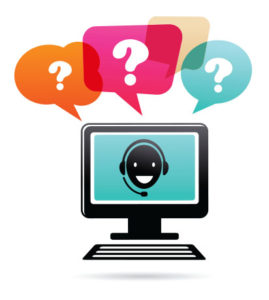 Billions of things – buildings, machines, devices and other materials embedded with sensors — will begin to request support on behalf of human customers during the next two years, so how should businesses respond?
Billions of things – buildings, machines, devices and other materials embedded with sensors — will begin to request support on behalf of human customers during the next two years, so how should businesses respond?
It’s essential to identify the level of intelligence of the things that will most likely be your customers. Things as customers will vary in their level of maturity, as well as in terms of the complexity of the service requests and the need for human intervention, all of which place different demands on customer service organisations.
The level of intelligence of things becoming customers can be summarised using three groups: fixed, adaptable and autonomous (see Figure 1). Things in these groups are not bound to one group, but can function interchangeably, depending on their needs.
Fixed Things
Fixed things as customers exist today in B2B and B2C environments and will continue to impact all industries at a much higher volume during the next three years.
A number of questions must be asked around these things.
What can they do? Things only request a specific type of customer service, as predefined by the human customers they support.
Who sets the rules and makes decisions? People set the rules that are then used by things to execute support requests; fixed things use simple reasoning rules.
What types of rules are in place? Things will be able to identify and make requests. They will already know their supply or service threshold and their product or service condition.
For example, Preventice Solutions’ BodyGuardian Heart is a wireless external monitor that allows medical teams to monitor patients while they’re in their typical environment. The monitor sends information on heart rhythm to the Preventice Services Monitoring Centre and can request customer support when abnormalities are detected.
Adaptable things
Adaptable things as customers show up in some B2B manufacturing environments today and are most likely to appear in the agriculture, automotive, financial services, healthcare, IT, transportation and utility industries during the next three years.
What can they do? Things can choose between competing service providers or channels and decide which one to work with based on predefined rules.
Who sets the rules and makes decisions? People define the rules, and things are entrusted with decision making.
What types of rules are in place? In addition to the capabilities of fixed things, adaptable things can understand option ranges, price or budget thresholds and preferred selection criteria.
Example: Ambyint sensors, which are mounted to oil well pumps, alert operations managers of issues with machinery or the site, and recommend solutions either automatically or with human intervention.
Autonomous things
Autonomous things are the least likely to be an immediate concern for customer service organisations, despite their use in financial services environments such as for algorithm-based trading.
What can they do? Things can request support by predicting customers’ needs based on the context and learned customer preferences.
Who sets the rules and makes decisions? Autonomous things are given basic guidelines, but have predictive and prescriptive engines, as well as machine learning, so they become smarter as they learn more about customer preferences.
What types of rules are in place? In addition to the capabilities of fixed and adaptable things, autonomous things are given explicit instructions on what they can and cannot do, both legally and ethically.
Example: One example would be a smart car that knows it will need an oil change within the next 2,000 miles. The car would know that its owner typically drives 2,000 miles in one month, so it has one month to identify the best deal on an oil change from a shop with the best reviews. It would then schedule the appointment directly with the shop’s service team, handling all of the relevant details and requests, as well as prepayment.





